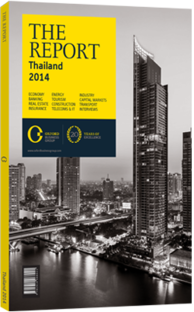OBG talks to Prapat Chongsanguan, Governor, State Railway of Thailand (SRT)

Interview: Prapat Chongsanguan
To what extent will the introduction of high-speed rail in Thailand promote opportunities for development outside of Bangkok?
PRAPAT CHONGSANGUAN: The development of high-speed rail can be considered a significant milestone in the broader trajectory of Thailand’s economic development, as well as being the next chapter in the country’s rail network. Thailand will change dramatically as a result of this project, as it will give rise to a new commuter class, particularly between Bangkok and nearby urban centres. As such, it will alter the development structure of the country, encouraging greater decentralisation to promote growth in the provinces and not just the capital. In this sense we expect the country’s development profile to become more balanced.
It will also change the income of communities situated in proximity to these new lines, as they will enjoy a better standard of living and access to new money and new markets. The idea is to encourage greater urbanisation along these routes and to give people the option to leave Bangkok, which in turn is likely to reduce congestion in the capital. It will also have a corresponding impact on national industry. When Japan started developing the Shinkansen high-speed railway network in the 1960s, its economy was relatively weak, though it has since developed collateral industries and technologies to service the train’s development, which in turn has stimulated economic growth. A similar dynamic can be seen in China. This is what we hope will happen to Thailand via the generation of new technology and expertise to service the next stage of the country’s development.
What steps is the SRT taking to improve operational safety on Thailand’s rail network?
PRAPAT: There have been a number of news stories in 2013 concerning the issue of derailments and track safety in Thailand. Most of these incidents have been due to poor track maintenance, as we have some tracks that were manufactured in 1956 that are still in use. A railway track consists of various components such as the sleeper, the foundation, the ballast and then the track itself. In Thailand, the foundation part has been poorly maintained and has been in use for almost 100 years. In these conditions, when the foundation is not stable and the train travels over these areas there is a high chance of failure and derailment.
In light of these conditions, SRT is investing heavily in a process of rehabilitation where we change and upgrade the infrastructure, including the sleepers and ballasts, as well as new tracks and signalling systems. This process began in 2013, and we hope all of this will be complete by 2015.
We are also investing in new locomotives and passenger coaches, which will promote fuel efficiency and passenger safety. We have signed the first contract with a Chinese company to provide 20 locomotives and wagons for the transportation of goods and expect them to arrive in early 2015.
How will the SRT’s mandate change in response to Thailand’s transport infrastructure plan?
PRAPAT: There has been some discussion concerning the restructuring of SRT in response to the shifting demands of the rail network. As a priority, we are proposing that SRT is granted additional manpower to manage some of the expected changes to the rail network over the medium term.
Under a regulation introduced a number of years ago, SRT is prevented from directly recruiting people even when existing staff retire. Right now our staff levels are down to 11,000 from a peak of around 30,000 a decade ago, and we badly need more people to implement the new projects. We are proposing that the government alter this regulation to allow for direct recruitment and an expanded workforce.
In order to attract this new workforce, SRT will need a clear picture of what the organisation will be in the near future, particularly in terms of the implementation and oversight of the new high-speed rail lines.
You have reached the limit of premium articles you can view for free.
Choose from the options below to purchase print or digital editions of our Reports. You can also purchase a website subscription giving you unlimited access to all of our Reports online for 12 months.
If you have already purchased this Report or have a website subscription, please login to continue.

